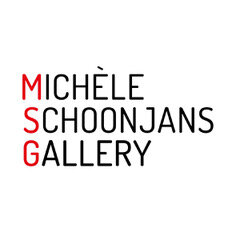LIEVEN DECABOOTER (°1961, lives and works in Welvegem)
"Those Simple Things in Life" by Lieven Decabooter is a rediscovery of the artist's work for the Brussels art scene.
Lieven Decabooter, born in Kortrijk in 1961, now lives and works in Wevelgem (Belgium). He studied at St-Lucas (Ghent). Lieven started his artistic career in 1984 with an exhibition "Prizewinners Visual Arts in Belgium" at the SMAK (Ghent). He was laureate of the "Hoppelandprijs" (1983) and of "Stimulans" (1987). Lieven was also selected twice (in 1985 and 1988) for the "Prix de la Jeune Peinture Belge" at the BOZAR (Brussels Fine Arts Centre) and subsequently held exhibitions at the pace of the metronome in Germany, the Netherlands and northern Belgium. At the beginning of his career, he used plastic figurines as figures and subjects on his canvases to create a narrative. Since 2016, these paintings have become more and more cinematic.
The exhibition "Those Simple Things in Life" invites the visitor to discover the intimate world of Lieven Decabooter. Contrary to fashion, the artist builds a work full of character in which every detail plays a role. The characters, objects and abstract signs that are connected create associations that are sometimes ironic, sometimes disturbing and even threatening.
A striking feature of his work is his working method. He chooses to paint on the rough brown back of linen canvases instead of on the white front. He begins with an indeterminate primer on the fibrous brown side. This unusual way of working means that the oil paint is, as it were, sucked into the canvas, creating a new kind of perception and depth in the layers of paint. The upside-down technique is an interesting starting point for the further creative process. By painting on the empty canvas in this way, Lieven releases an abstract lyrical soul, which later leads to figurative painting.
The artist uses a wide variety of visual languages from film, literature or painting to express his personal universe in art. With his enormous imagination, he invents new scenarios from personal archives; different stories (the fantasies of David Lynch, the unspoken words of Edward Hopper, the black humour of Monty Python, ...) and forms (the intimate power that emanates from Rothko's paintings, the wild dramaturgy of Pina Bausch, ...). His compositions are a sum of heterogeneous illustrations, in which the montage is important. Realistic representations flow into overview drawings. The effect is overwhelming and confronts us with a theatrical world where an absurd visual logic is never far away. According to him, the power of a still image is to make the spectator curious about what is happening outside the edges of the canvas. It creates a suggestive atmosphere that encourages free association and interpretation.
The paintings contain clues to understand what is yet to come. The atmosphere, the evocation of the unimaginable and the disturbing character evoked in the story can also be found in films. The theatrical atmosphere has never left his paintings, nor has his preference for the narrative. His work is powerful and constantly evolving.
His works are in the collections of the Province of West Flanders, the Ministry of the Flemish Community and Private Collections.













